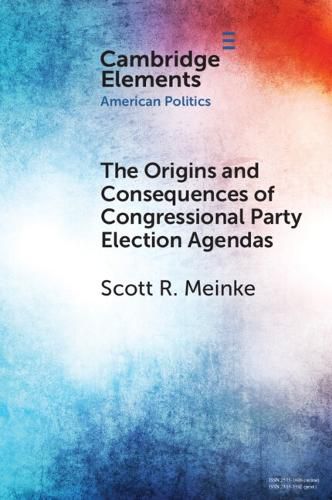Readings Newsletter
Become a Readings Member to make your shopping experience even easier.
Sign in or sign up for free!
You’re not far away from qualifying for FREE standard shipping within Australia
You’ve qualified for FREE standard shipping within Australia
The cart is loading…






This Element examines congressional party election agendas, asking first how they originate and what priorities within the party they strategically represent and, second, how they shape post-election legislative activity and policymaking. After surveying post-1980 agenda efforts, it focuses on two prominent cases, the Republican Contract with America (1994) and the Democratic New Direction for America (2006). Using archived records and other qualitative evidence, it shows that both agendas were leadership-driven but were developed in lengthy and relatively inclusive processes. Quantifying agenda content, it demonstrates that the parties strategically skewed agenda promises toward select segments of the caucus, as measured in bill introduction priorities, and the promises echoed leadership messaging from speeches and floor motions in the Congress before the election. After winning a majority, both parties shifted the House's legislative activity sharply toward agenda priorities, but the impact on policy outcomes was substantially constrained.
$9.00 standard shipping within Australia
FREE standard shipping within Australia for orders over $100.00
Express & International shipping calculated at checkout
This Element examines congressional party election agendas, asking first how they originate and what priorities within the party they strategically represent and, second, how they shape post-election legislative activity and policymaking. After surveying post-1980 agenda efforts, it focuses on two prominent cases, the Republican Contract with America (1994) and the Democratic New Direction for America (2006). Using archived records and other qualitative evidence, it shows that both agendas were leadership-driven but were developed in lengthy and relatively inclusive processes. Quantifying agenda content, it demonstrates that the parties strategically skewed agenda promises toward select segments of the caucus, as measured in bill introduction priorities, and the promises echoed leadership messaging from speeches and floor motions in the Congress before the election. After winning a majority, both parties shifted the House's legislative activity sharply toward agenda priorities, but the impact on policy outcomes was substantially constrained.